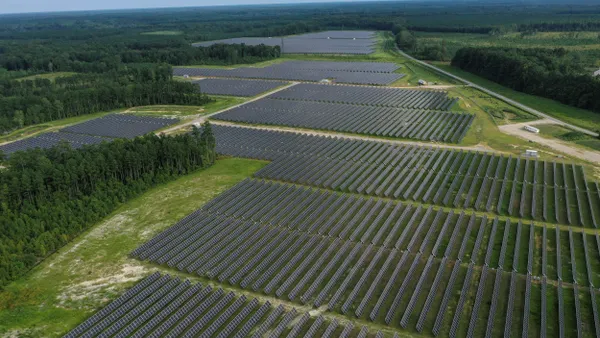Dive Brief:
-
Siemens is collaborating with LO3 Energy, a start-up based in New York, to develop microgrids that use blockchain technology to enable local energy trading.
-
The microgrid project will be based in Brooklyn and will allow rooftop photovoltaic systems to feed excess electricity back to the local grid and receive payments from the purchasers.
-
Blockchain is a digital ledger – bitcoin uses blockchain technology, for instance – that enables peer-to-peer trading.
Dive Insight:
The Brooklyn blockchain-based microgrid started as a pilot project of LO3 Energy. The New York based start-up is now collaborating with Siemens, which will provide support from its Digital Grid microgrid platform and from next47, a unit of Siemens set up to fund start-ups and disruptive technologies. LO3 is providing its TransActive Grid peer-to-peer trading platform.
LO3 says the transactions on its platform are trackable and tamper-proof without the need for centralized monitoring and, thanks to a cryptographic process and distributed storage, the possibility of manipulation is virtually eliminated.
Siemens says it sees “tremendous opportunities” for combining blockchain technology in microgrids applications.
“It permits transparent, efficient trading between multiple participating systems and various stakeholders while taking grid-specific requirements into account”, Thomas Zimmermann, CEO of Siemens’ Digital Grid business unit, said in a statement.
“In the world of finance, blockchain technology is rapidly advancing across many sectors, but in the energy market, things are comparatively different. With our microgrid solution in Brooklyn, we’ll demonstrate just the beginning of what blockchain can do in the transactive energy world,” Lawrence Orsini, founder of LO3 Energy, said in a statement.
Preliminary tests of peer-to-peer transactions between neighbors were successfully completed in April 2016.
The use of blockchain technology in a microgrid application could add momentum to companies, such as Sonnen, that are looking at energy storage as a way of creating virtual power plants by aggregating distributed resources. But it requires legal authorization for the third-party ownership of distributed resources, which is currently prohibited in five states.













